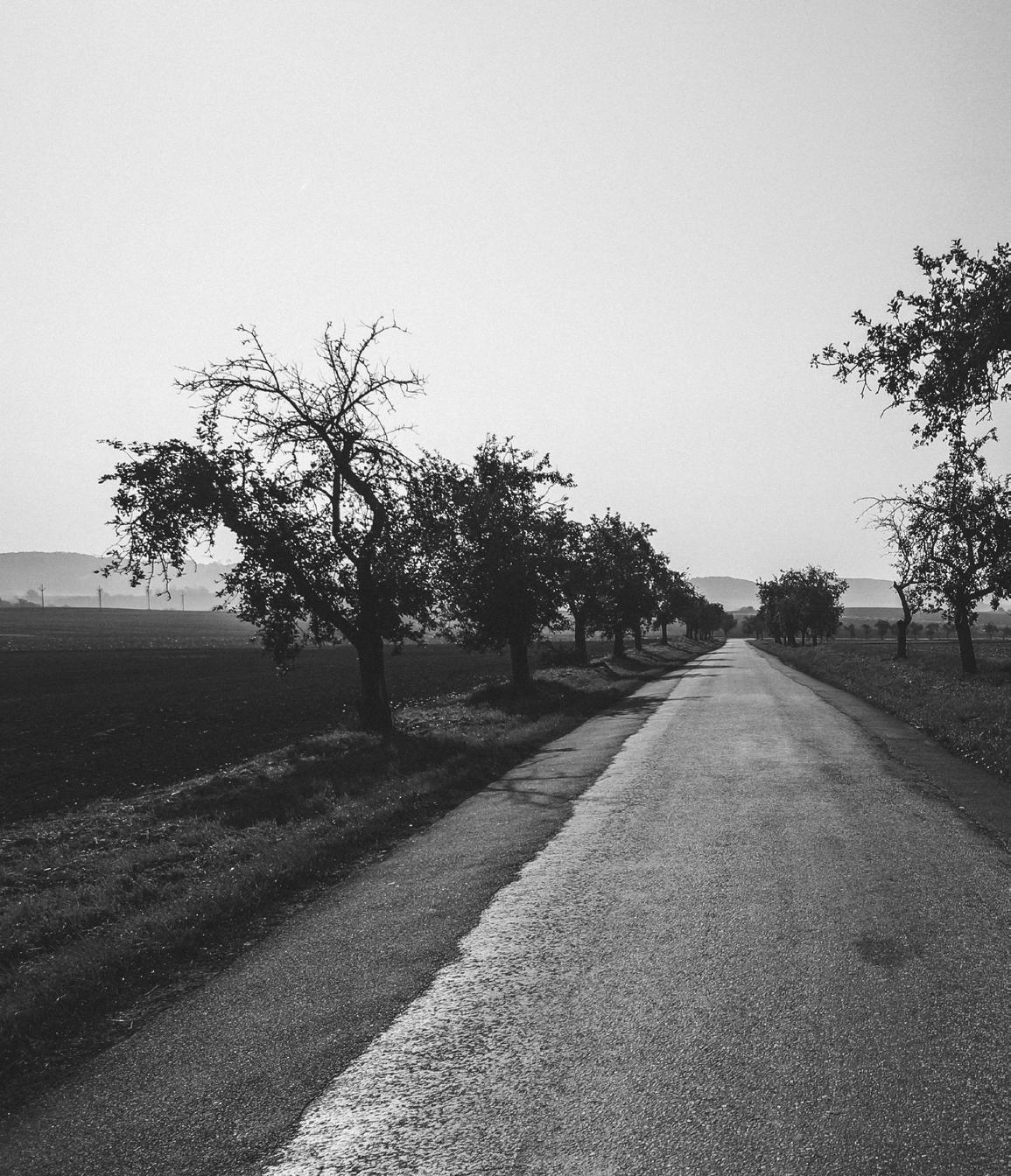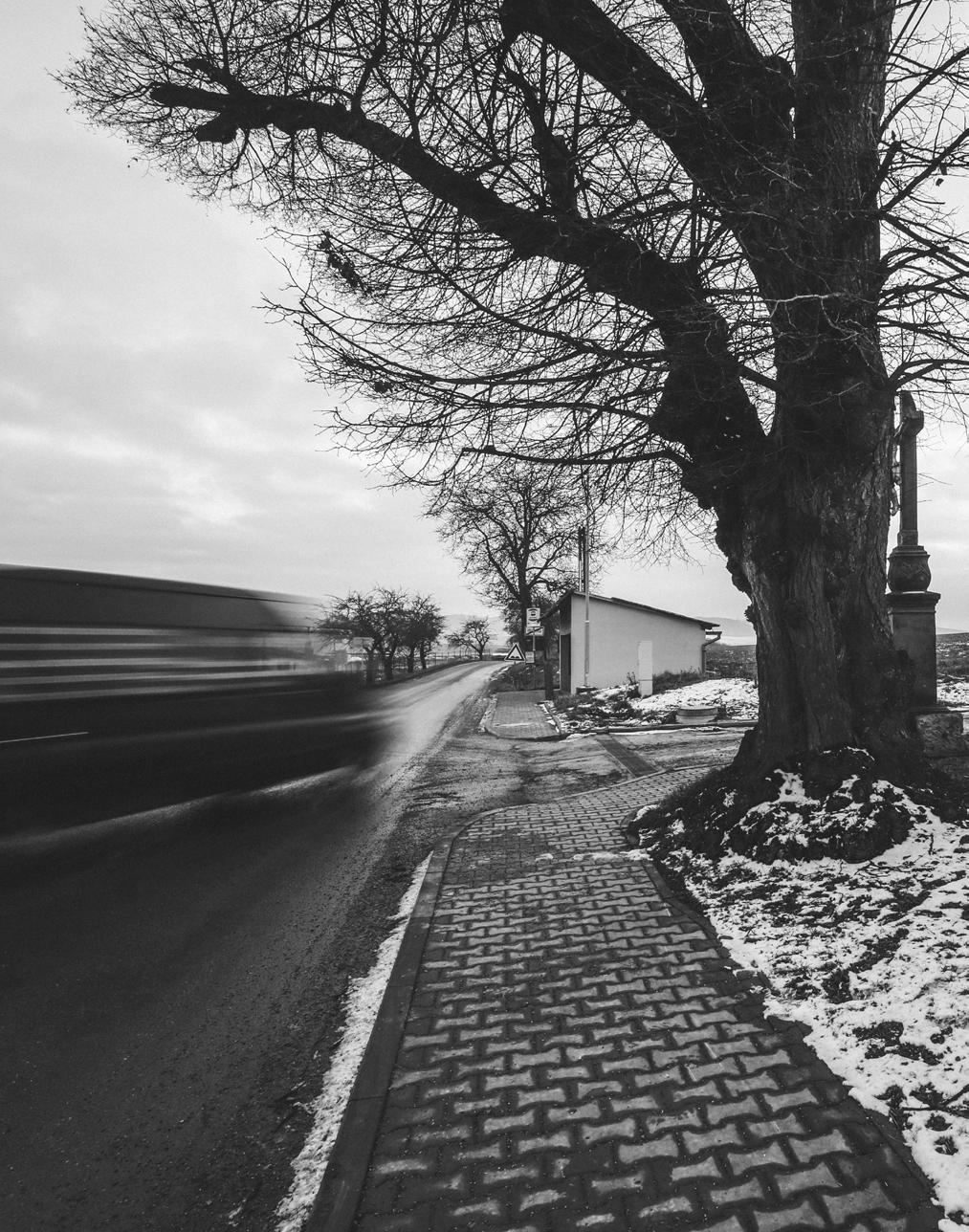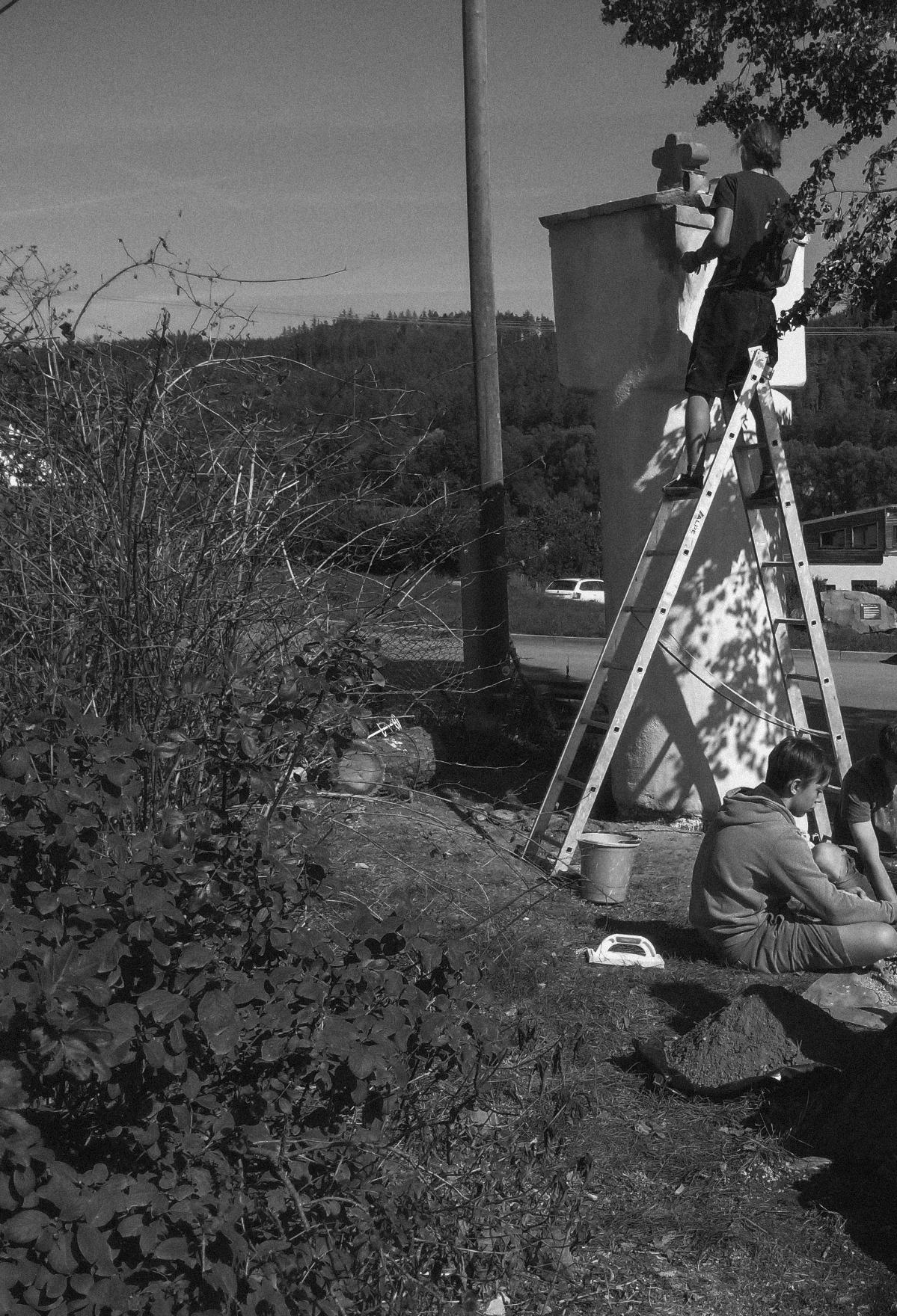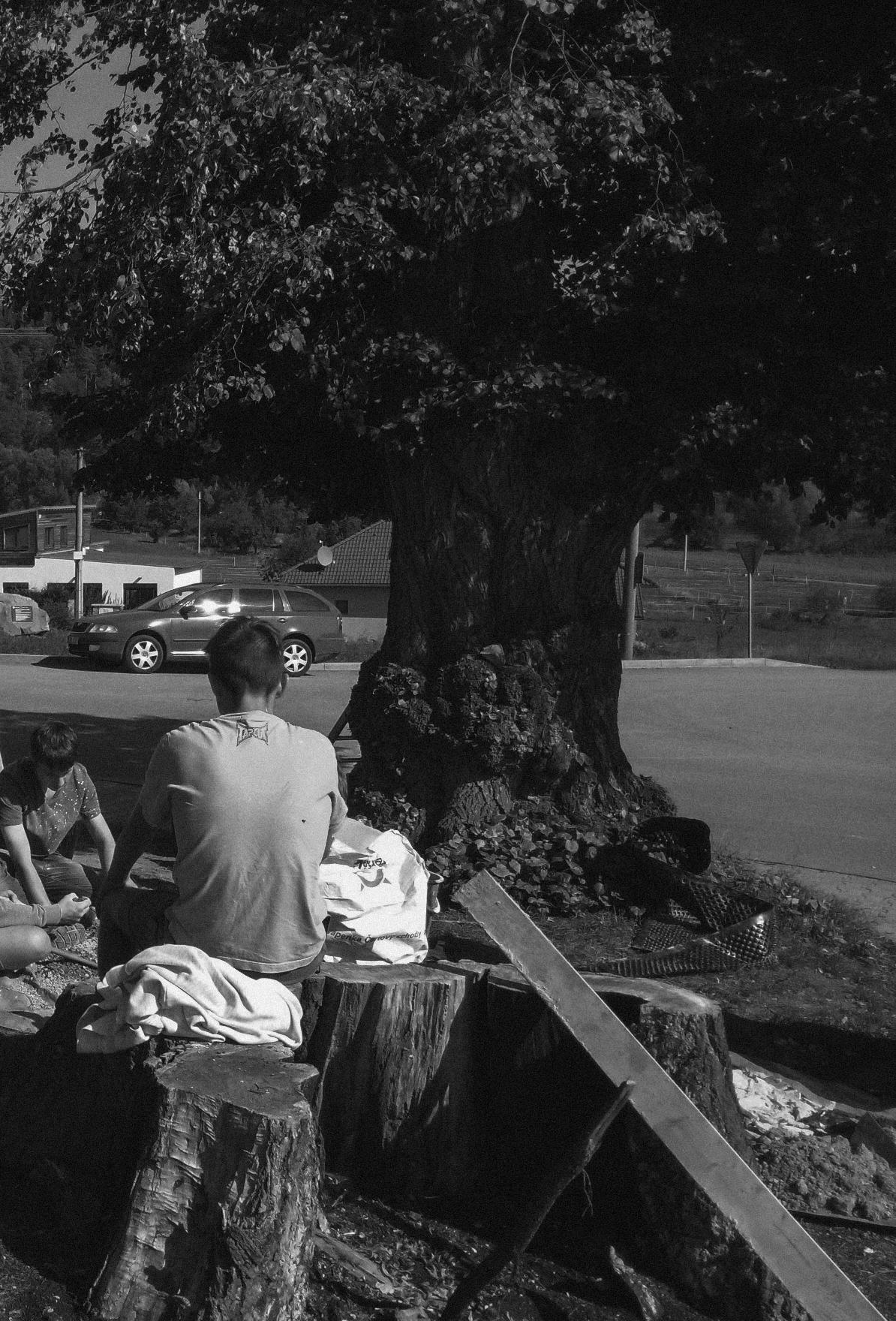
6 minute read
landscape of roads krajina silniční
Landscape of roads
62
Advertisement

4
64
After the fall of the socialist regime during the 1990s, the lands were later restituted and returned to the descendants of the original owners, while the agricultural associations underwent large scale privatization. In the meantime, native individualism had already turned into so-called kolkhoz. After the collapse of the communist regime, the collective agricultural ownership gradually turned into the proprietary ownership of legal entities. However, after the 40 year-long break, the descendants of original landowners had no ties to their ancestor’s lands which they gained back after restitution. Only a small amount of them returned to the agricultural labour of their ancestors and started to run a family farm. This was due to the fact that the majority of descendants had already started to live elsewhere rather than in the area their ancestors had cultivated. As a result, the Czech and Moravian landscape was dominated by large agri-
landscape of roads cultural holdings. While in the European Union the share of workforce employed in agriculture on family farms is 75% (note: 44.1% of farms are owned by individual owners, 32.4% are in the joint ownership of a farmer’s family) in the Czech Republic and Slovakia the share of workforce employed in agriculture on family farms is only 25%. [12] Nowadays, the default state of agricultural lands is a large field which has been customized to be easily scaled by tractors. The majority of land is owned by large agricultural holdings and companies. The original owners who built and cared for the minor sacral architecture on their lands have already died out. Moreover, the spiritual significance of the landscape which could influence the majority of the population is at a very low level. Forty years of totalitarianism has made the Czech Republic one of the most atheistic and secularized countries in Europe: 91% of the people who are 16-29 years old do not claim any
65
66
religion.[13] As a result of the mechanization and automation of business processes, less and less people tended to work in agriculture. Whilst there were 1.3 million people working in agriculturein 1948, only 132 thousand were active in agriculture in 2010, with this number decreasing each year [14] A large part of the population is no longer in daily contact with the landscape and so do not perceive it as their main point of interest, i.e. as their donor of abundance and a source of life for their families. The landscape of the 21st century has also changed the perception of scale. Nowadays, the majority of people do not live in the countryside. In addition, modes of transport are affecting the landscape as well. The duration of individual journeys between places has been shortening since the increase in transportation speed. There is no issue in getting from Prague to Rome or Oslo in just two hours. Nowadays, we tend to perceive the landscape only from
landscape of roads the windows of an air-conditioned plane, a car or a train, as if feeling the countryside is not the main point. The recreational purpose of the landscape is also important as we use the landscape for jogging or just walking and yet still, an unusual feeling struck us from time to time while doing so. We just pay the landscape a visit. Perhaps it is the present time, i.e. a quarter of a century since the fall of the regime that forms an ideal time to look for the meanings of a new relationship which can be estimated with the landscape. The landscape, which is the imprint of our history, has become a landscape without a relationship nor human scale. However, the tabula rasa concept has its positives as well. We are not in a position where we would not be able to continue to maintain the traditions from the past without knowing why. Those who have been cultivating the lands are now gone. Nowadays, it is possible to find a new and unique way how to deal with the landscape and
67
68
its future. Many initiatives have emerged recently, whose aim is to find current and suitable methods for how to work with the landscape with the end goal of once again inhabiting it. An interesting achievement which aims at finding a new way to approach the landscape is Michal Šuška’s diploma thesis entitled Small Things in the Landscape.[15] It is also worth mentioning the realizations of Bára Ponešová and Jan Foretník in dealing with the places of restoration across the abandoned landscape of the South Moravian borderland.[16] Moreover, one can find the potential in the proposal of the municipality of Vestec, which directly responds to the “unhealthy landscape” needs and tries to deal with a concrete problem by approaching it differently. [17] We can also see many initiatives trying to restore the routes which have been ploughed in the past, planting municipal alleys and orchards while dealing with the present ecological situation and
landscape of roads increasing dry seasons. [18] [19] [20] It is almost a necessity to find a way to inhabit the landscape again.

69
70
Po pádu socialistického režimu došlo v devadesátých letech k restitucím a vrácení pozemků potomkům původních majitelů a k privatizaci zemědělských družstev. Přirozený individualismus se mezitím již změnil v kolektivní statek. Po pádu komunistického režimu se ovšem z kolektivního statku postupně stal statek právnických osob.1 Potomci původních statkářů po restituci neměli po čtyřicetileté pauze k rodinným pozemkům žádný vztah. Často následkem přesídlení žijí jinde než na místě, kde jejich rodina půdu obdělávala, a tak se k zemědělství a provozování rodinné farmy vrátil jen zlomek lidí. Českou a moravskou krajinu ovládly velké zemědělské podniky. Zatímco v Evropské unii je podíl pracovních sil na rodinných farmách 75 % (pozn.: 44,1 % farem je ve vlastnictví jednotlivých majitelů, 32,4 % ve společném vlastnictví rodiny farmáře), v České republice, ale i na Slovensku činí podíl pracovních sil v rodinných zemědělských podnicích jen 25%.
krajina silniční [12] Výchozím stavem je v současnosti rozlehlý lán, který se měřítkem přizpůsobil traktorům. Půda je často ve vlastnictví velkých zemědělských společností. Původní majitelé, kteří drobnou sakrální architekturu v krajině stavěli a starali se o ni, již zemřeli. Rovněž duchovní význam krajiny většinové populaci nic neříká. Čtyřicet let totality vytvořilo z České republiky jednu z nejateističtějších a nejsekularizovanějších zemí v Evropě: 91 % osob ve věku 16–29 let se nehlásí k žádnému náboženství.[13] V důsledku mechanizace a elektronizace pracuje v zemědělství stále méně lidí. Zatímco v roce 1948 pracovalo v zemědělství 1,3 milionu obyvatel, v roce 2010 to bylo jen 132 tisíc a toto číslo každým rokem klesá.[14] Velká část populace již není v každodenním kontaktu s krajinou a nevnímá ji jako svůj středobod, tj. jako dárce hojnosti a obživy pro svou rodinu. Krajina 21. století změnila i měřítko vnímání. Nejen že dnešní člověk již v krajině
71
72


73
74
nežije, ale změna se týká i způsobu dopravy. Ta se dnes zrychluje a díky tomu se pomyslně zmenšují vzdálenosti. Není problém dopravit se za dvě hodiny z Prahy do Říma nebo do Osla. Krajinu většinou vnímáme za okénkem klimatizovaného letadla, auta nebo vlaku. Vlastně jen mimoděk, v rámci zpestření cesty. Důležitý je rovněž rekreační účel krajiny. Chodíme do ní běhat, na procházky. Pořád ale s pocitem nevšednosti. Do krajiny chodíme „na návštěvu“. Možná právě současná doba, tj. čtvrt století od pádu režimu, je ideálním časem na hledání nového vztahu. Krajina, jež je otiskem naší historie, se stala krajinou bez vztahu a lidského měřítka. Koncept tabula rasa má ovšem i svá jasná pozitiva. Nejsme v situaci, kdy bychom vůbec mohli pokračovat v minulé tradici, aniž bychom věděli proč. Ti, kteří krajinu zušlechťovali, už jsou pryč. Nabízí se možnost najít si ke krajině novou cestu. V poslední době se začínají objevovat iniciativy zaměřující
krajina silniční se na práci s krajinou. Znovu tak krajinu obydlujeme. Zajímavým počinem zaměřeným na hledání nového přístupu ke krajině je diplomová práce Michala Šušky s názvem Malé věci v krajině.[15] Za zmínku stojí i realizace Báry Ponešové a Jana Foretníka s tématem míst obnovy v opuštěné krajině jihomoravského pohraničí.[16] Nebo krajinný plán obce Vestec, který přímo reaguje na „nezdravou krajinu“ a pomocí konkrétního návrhu se snaží najít nový přístup.[17] V mnoha obcích rovněž v poslední době zaznamenáváme iniciativy, jež se věnují obnově zaoraných cest a výsadbě obecních alejí, stromořadí nebo sadů, a to i v návaznosti na ekologickou situaci související nejen se sílícím suchem.[18] [19] [20] Znovu obydlet krajinu se stává téměř nutností.





